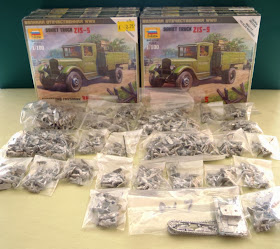My wife Sue and I have been in Hereford for the past few days attending the wedding of a friend.
The journey there was long ... and tedious. The SatNav predicted that the journey would take just under three hours and thirty minutes ... but the estimate of the journey was over two hours out and it took just over five hours and thirty minutes to drive from London to Hereford. Luckily the drive back took less time (only four hours) but it took a lot out of us.
We were able to spend part of Saturday morning in Hereford and were pleasantly surprised to see what a nice city it was. The centre does not seem to have suffered too much at the hands of city planners during the 1960s and 1970s and still retains the feel of of being a county town.
We parked in a car park in Bath Street, and walked up Gaol Street to St Peter's Square ...
... and then into the centre of the shopping area, which is known as High Town. This is situated around a large open area that is bounded by a variety of Georgian and Victorian buildings.
At one end of this central area in High Town is an old building. This is a timber-framed Jacobean building, built in 1621, and known – appropriately – as the Old House. It currently houses a museum presenting life in Jacobean times.
On one side to the central area of High Town is an indoor market. We had a gentle stroll through the market, but resisted the temptation to buy anything.
During our time in the High Town area a local charity that provides horse riding for disabled children was collection donations. They were being quite successful, mainly due to their clever use of two miniature ponies. They got lots of attention ... and this resulted a steady stream of donations.
Unfortunately we did not have enough time to visit Hereford Cathedral or the Herefordshire Light Infantry Museum. The former houses the famous Mappa Mundi and the latter is only open by appointment from Monday to Friday from 9.30am to 4.00pm.
The journey there was long ... and tedious. The SatNav predicted that the journey would take just under three hours and thirty minutes ... but the estimate of the journey was over two hours out and it took just over five hours and thirty minutes to drive from London to Hereford. Luckily the drive back took less time (only four hours) but it took a lot out of us.
We were able to spend part of Saturday morning in Hereford and were pleasantly surprised to see what a nice city it was. The centre does not seem to have suffered too much at the hands of city planners during the 1960s and 1970s and still retains the feel of of being a county town.
We parked in a car park in Bath Street, and walked up Gaol Street to St Peter's Square ...
... and then into the centre of the shopping area, which is known as High Town. This is situated around a large open area that is bounded by a variety of Georgian and Victorian buildings.
At one end of this central area in High Town is an old building. This is a timber-framed Jacobean building, built in 1621, and known – appropriately – as the Old House. It currently houses a museum presenting life in Jacobean times.
On one side to the central area of High Town is an indoor market. We had a gentle stroll through the market, but resisted the temptation to buy anything.
During our time in the High Town area a local charity that provides horse riding for disabled children was collection donations. They were being quite successful, mainly due to their clever use of two miniature ponies. They got lots of attention ... and this resulted a steady stream of donations.
Unfortunately we did not have enough time to visit Hereford Cathedral or the Herefordshire Light Infantry Museum. The former houses the famous Mappa Mundi and the latter is only open by appointment from Monday to Friday from 9.30am to 4.00pm.

















































